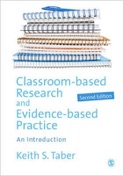Educational Research Methods

A site to support teaching and learning...

Randomisation process criterion
Can we check the process is random?
“If we select students at random, then all students have an equal chance of being in the sample, and it becomes very unlikely we would get the same sample if we repeated the process.” (Taber, 2013: 255)
As an example consider you needed to divide a sample of twenty teachers into two groups by random assignment, and you had an alphabetical list of names. Consider the following procedures:
-
a)Divide the list of names into the top group ten names, and the bottom ten names;
-
b)Put each name on a separate slip of paper, fold them over, and put them in a box. Shake the box, then take out ten names for teachers in one group. (The other names become the other group.)
-
c)Go down the list of names tossing/flipping a coin for each name, and list separately those where the coin lands ‘heads-up’ and those who are ‘tails-up’. Stop when there are ten names in one list as the remaining names go in the other list. (Or use a die and roll for odd and even numbers.)
-
d)Number the names in the list. Put odd numbered names into one group, and even numbered names into the other group.
-
e)Go down the list of names rolling a die for each name, and list separately those where the die lands with an even number or with an odd number. Stop when there are ten names in one list as the remaining names go in the other list.
Ask yourself what would happen if you repeated the process several times. If the process would give the same groupings each time, then this is not a random process.
This is a personal site of Keith S. Taber to support teaching of educational research methods.
(Dr Keith Taber is Professor of Science Education at the University of Cambridge.)
2015
Taber, K. S. (2013a). Classroom-based Research and Evidence-based Practice: An introduction (2nd ed.). London: Sage.
